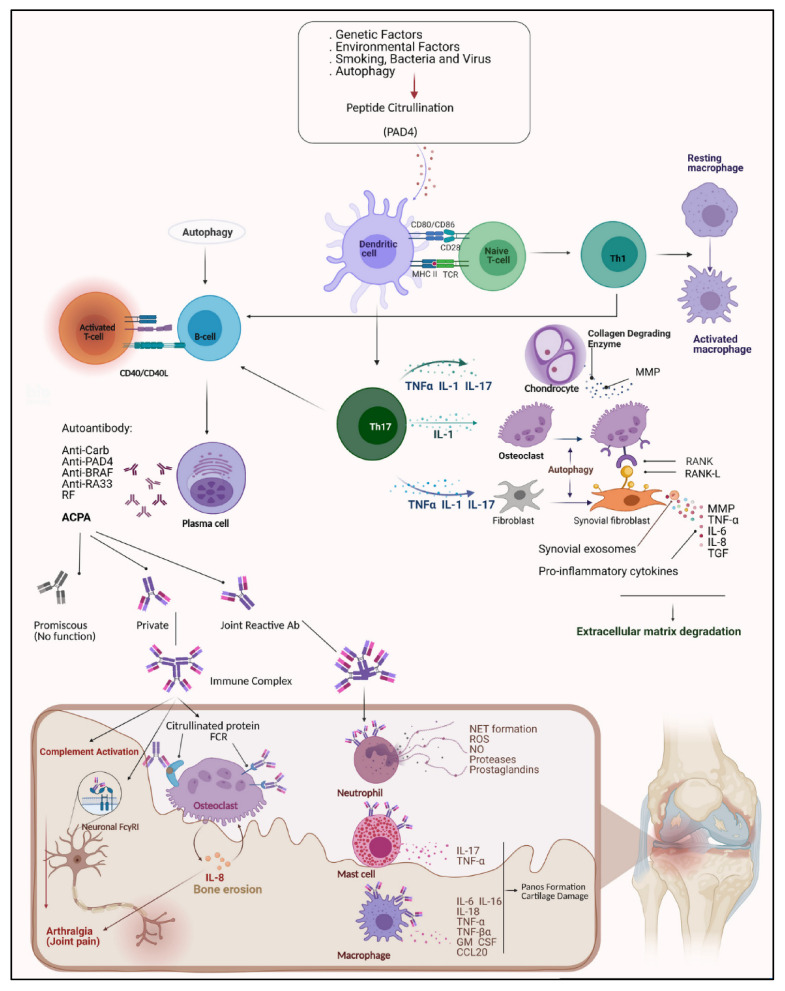Figure 1.
The etiology of rheumatoid arthritis. Multiple factors such as genetic background, smoking, bacterial infections, viral infections, and autophagy are involved in catalyzing the process of converting arginine to citrulline by PADI4 enzyme. Antigen presentation by the antigen presenting cells (APC) activates the naive T-cell, Th1, Th17, and Th2 cells. Th1 cells cause macrophage activation in the synovial joint by an elevated capability to secrete pro-inflammatory TNF. Th17 produces IL-17, IL1, and TNF-α, which effect chondrocytes, osteoclasts, and fibroblasts. Chondrocytes release collagen-releasing enzymes and Matrix-Metalloproteinase (MMP). Fibroblasts transform into FLS, which produce pro-inflammatory cytokines leading to destruction of the extracellular matrix. T-cells activate B-cells and plasma cells that secrete a variety of auto-antibodies. Auto-antibodies can attach to neutrophils and macrophages and lead to pannus formation and cartilage damage. They also can form an immune complex leading to joint pain and bone destruction.

